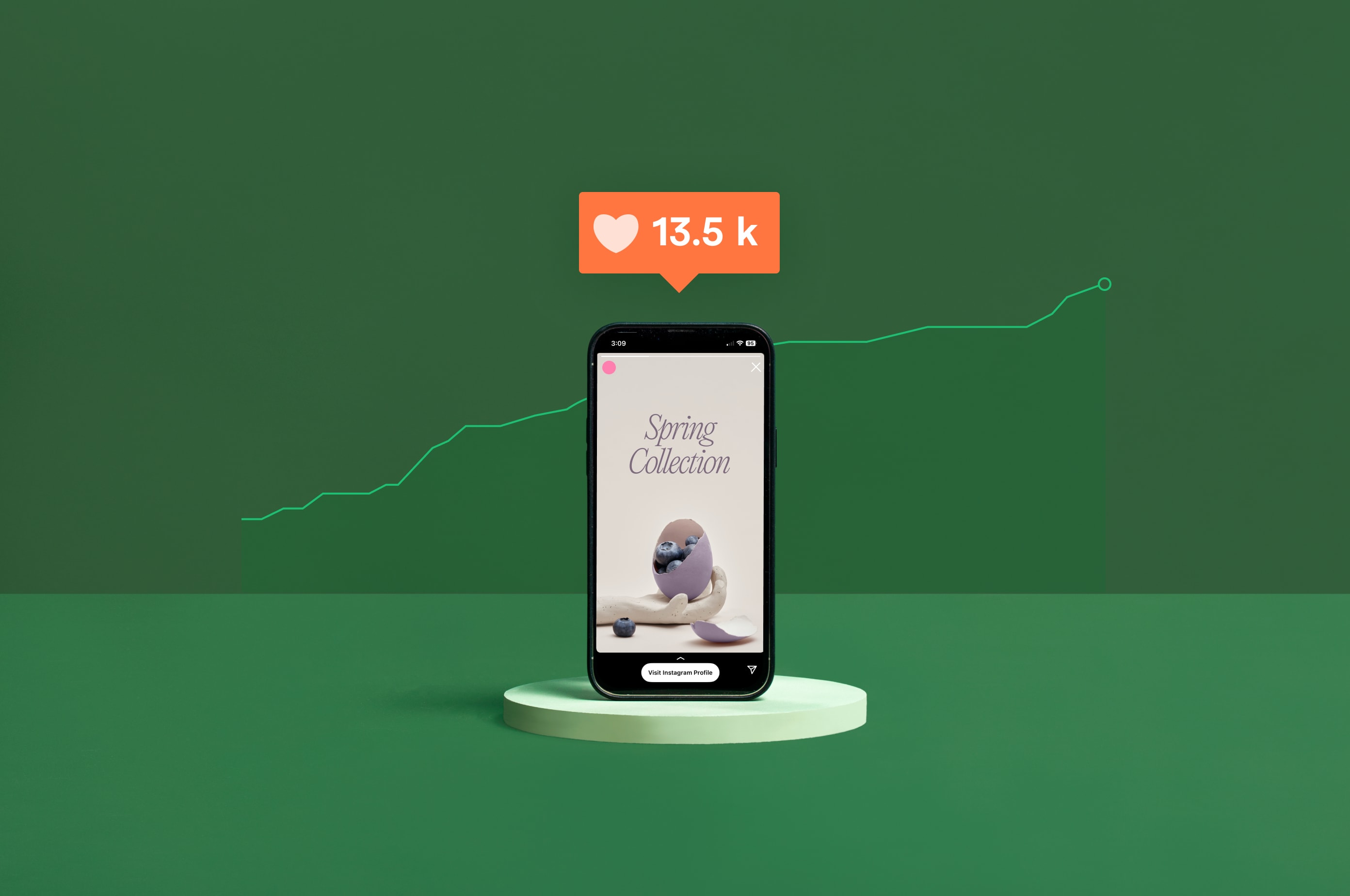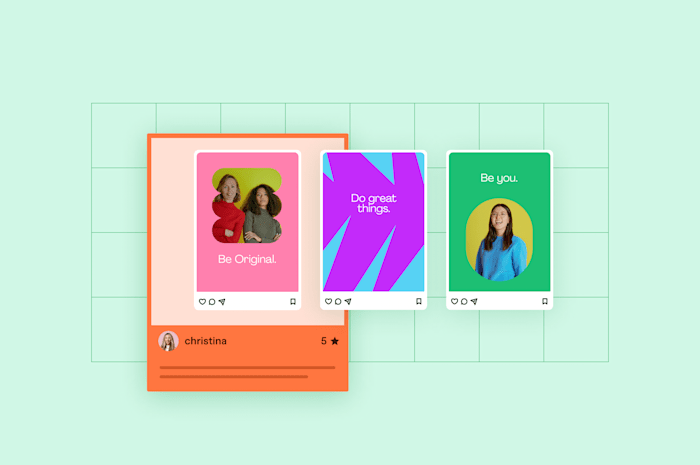9 UGC Strategies To Skyrocket Engagement and Conversions
Want to show off your new product to the world? Get actionable strategies for turning UGC into more engagement and conversions for your brand.
 June 14, 2023
June 14, 2023 13 minute reading
13 minute reading
User-generated content (UGC) is a marketing strategy used to increase brand awareness, engagement, and conversions.
It also builds trust and authenticity between a brand and its customers. Some 79% of consumers say UGC has a big impact on their purchasing decisions.
Below, we’ll look at nine ways to collect and promote UGC.
What is user-generated content (UGC)?
User-generated content is a marketing tactic that helps provide social proof to your audience. Social proof is a marketing psychology that suggests consumers are more likely to work with a business they’ve seen others be happy with.
With UGC, a business’s existing customers share photos, videos, and other types of content on their own feeds for their followers to see. If they tag the business or use a brand’s hashtag, it gives that brand a unique opportunity to re-share the content on their own channels.
UGC is great for increasing awareness and engagement metrics. However, it often takes a UGC marketing campaign to strategically gather enough content to incorporate into your regularly scheduled content.
Benefits of user-generated content
User-generated content is perfect for building authentic relationships with your target customers. It’s different from influencer marketing, where you pay popular social media users or celebrities to promote your products.
“UGC makes your brand feel more real and relatable to your audience,” says Shideh Kaviani, president of global womenswear brand Naked Wardrobe. “With UGC, people are seeing your brand existing in the real world, a world that they live in, thus allowing your brand to feel more applicable to them and their lifestyle.”
Other reasons UGC is so valuable include:
UGC appeals to younger generations, like millennials and Gen Z.
UGC is the most trustworthy type of content.
80% of consumers prefer to see photos of real people over stock photos.
Find social media content creators on Fiverr
4 types of user-generated content
There are four main types of UGC—or rather, places UGC comes from: customers, loyalists, employees, and UGC creators.
Customers
Customers are the people who make purchases from your business. They often share content about your product or service of their own accord. This is the most valuable type of UGC, because it’s completely organic and often hard to come by.
However, there are ways to get more UGC from them. You can create a call to action that lets customers know you’re looking for photos, videos, reviews, etc. You can also incentivize UGC to get more people to share for discounts or rewards.
Loyalists
Loyalists, or brand advocates, are the small but mighty group of people who love your business, and are more likely to provide you with UGC as a result.
Take advantage of this while simultaneously working to grow this group of customers. Create a VIP members club or offer exclusive deals to make them feel like a part of your community. Brand loyalists are powerful and can be great for word-of-mouth marketing.
Employees
Get your employees in on the content creation. They can create behind-the-scenes videos, day-in-the-life videos, and more to give your customers a look at the employee side of things.
While different from UGC, EGC (employee-generated content) can still be just as engaging, giving your customers a new perspective of how your business works.
UGC creators
Content creators partner with brands to create content that still has the appearance of authenticity, but is actually a paid promotion.
This type of content is always disclosed. While it may not be quite as valuable as organic UGC, creators can still help put together engaging content that stands out from a brand’s regular promotional content.
Managing all these content types is tough. If you need someone to help organize everything, hire a UGC creator on Fiverr today.
Hire UGC video creators
9 UGC strategies to boost conversion rates
Here are nine killer UGC strategies to help your brand gather user-generated content and use it to engage your audience and make sales.
1. Create a hashtag
The first step is to create a branded hashtag for customers to use when sharing UGC. This gives your business a simple way to aggregate and search for content your customers are sharing.
“There’s a reason hashtags have been the GOAT for all these years,” says Chelse Hensley, social media strategist at graphic design software Visme. “It’s a simple, effective way to organize UGC content from users. Making sure you cement the call to action for users to tag your business using a distinct hashtag will make finding content so much easier.”
Here’s an example of how furniture retailer West Elm handles this on its Instagram page:
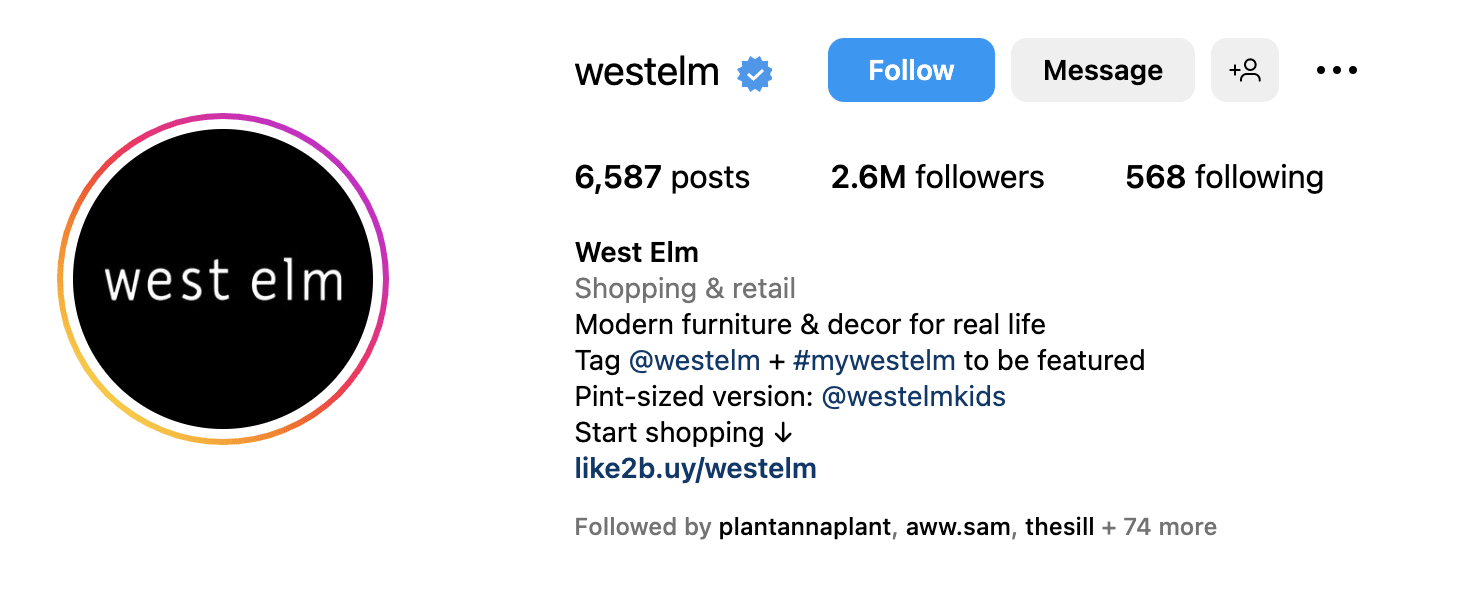
The brand includes clear guidelines on what to do if users want to be featured: tag the brand with the hashtag #mywestelm.
You can click on the hashtag to see it gets plenty of action, with nearly 350,000 posts.
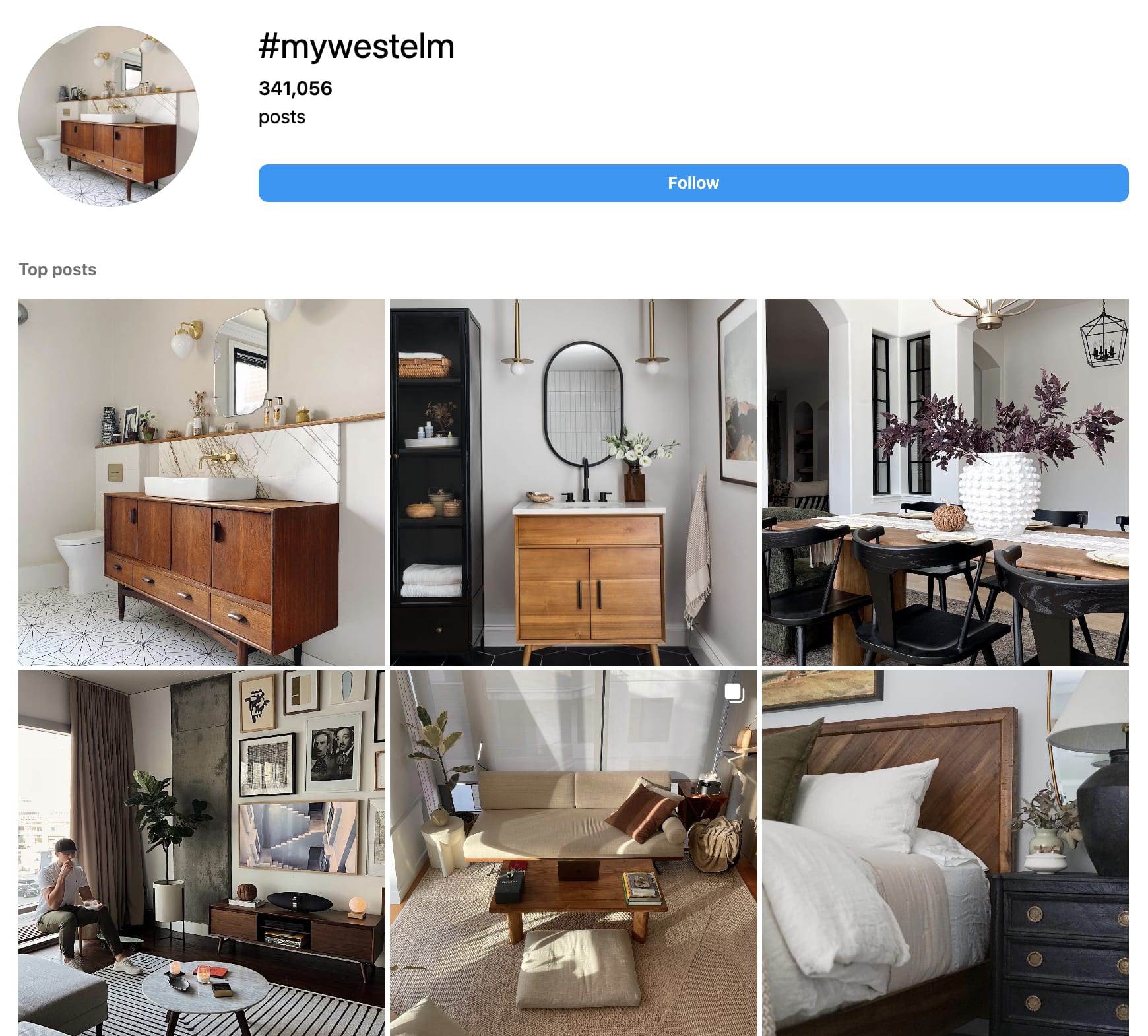
This means West Elm has plenty of UGC to choose from when creating its social media content calendar. And it’s extremely easy to find, because the brand has created a simple, branded hashtag its customers can use.
2. Share customer images and videos
The core part of UGC is being able to share the photos and videos your customers create on your brand’s own channels. Let’s dive into a couple of examples of user-generated content so you’ll know how to share it on your own pages.
First, take a look at this Instagram carousel shared by furniture brand Crate and Barrel.
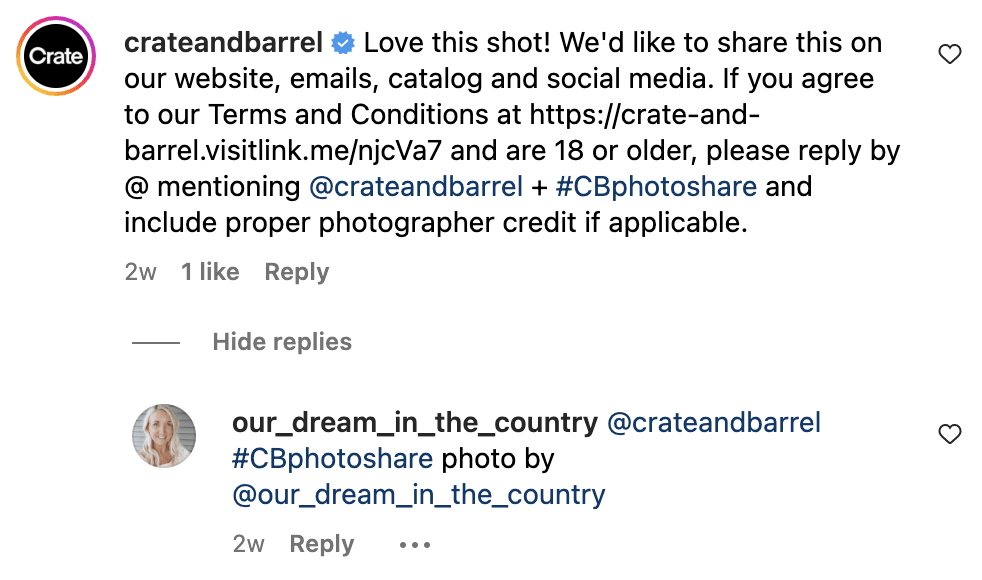
Crate and Barrel followed two essential rules when it comes to UGC: the brand tagged the creator and got permission before sharing the post on its own Instagram.
If you follow the tag to the original creator’s page, you can see Crate and Barrel left a comment asking for explicit permission to share the photos.

Here’s another UGC example from Chipotle on TikTok:
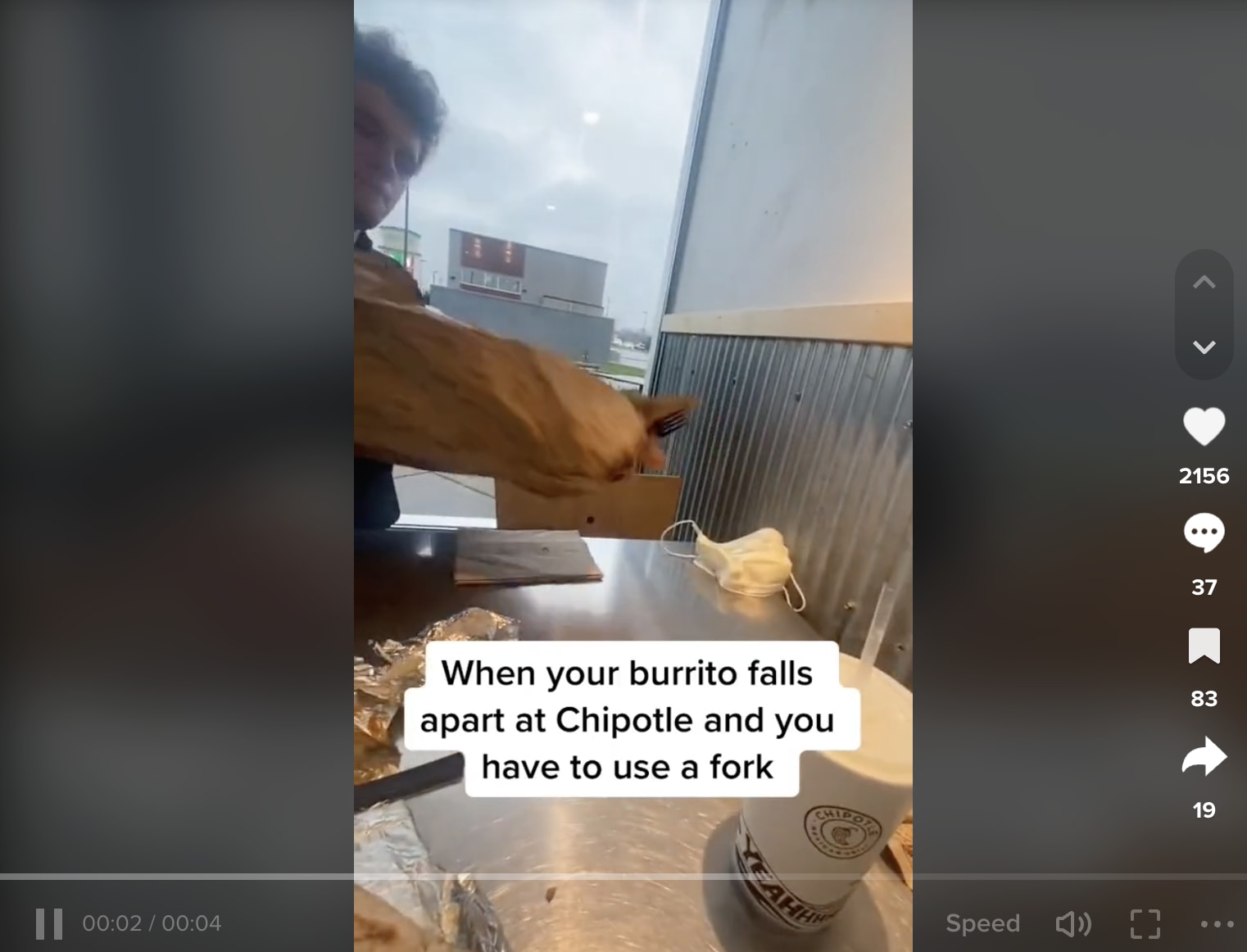
Source: TikTok
The original creator made a humorous video for his own channel that the fast food chain then reposted on its own TikTok. You can see that TikTok did tag the original creator, giving him proper credit.
Social media isn’t the only place you can share customer images and videos. You can also share them on:
Product pages
Blog posts
Email newsletters
Ecommerce online review sites
Ads
3. Build a community
Another great way to collect user-generated content is by building a loyal and active community of customers or users.
Hensley also shared that Visme is just about to launch a new UGC venture with its VIP community group called a “design tear down.” “Members will submit designs for a real world project that they want advice on, and a group of experts will ‘tear it down’ with constructive feedback to make it better,” she says.
What comes after the tear down? The build up! “The goal is to learn best design practices in a fun, positive way and build up a design that you can be proud of,” Hensley says. Plus, the end product will be shared on Visme’s social media platforms.
But the only way the brand is able to make this strategy work is through its online community of avid Visme users. By building a loyal customer community, calling for UGC becomes a much simpler process. You can find freelance community management on Fiverr to help you grow, manage and monetize your community.
4. Share social media mentions
One popular method of showcasing that people are talking about your brand online is screenshotting tweets that mention your brand and reposting them on Instagram.
You can use screenshots from Twitter, Facebook, review sites, blog comments, and more. Show happy customers giving your brand accolades or simply share funny posts your customers have made about your brand.
Here’s an example of the former from restaurant Outback Steakhouse:
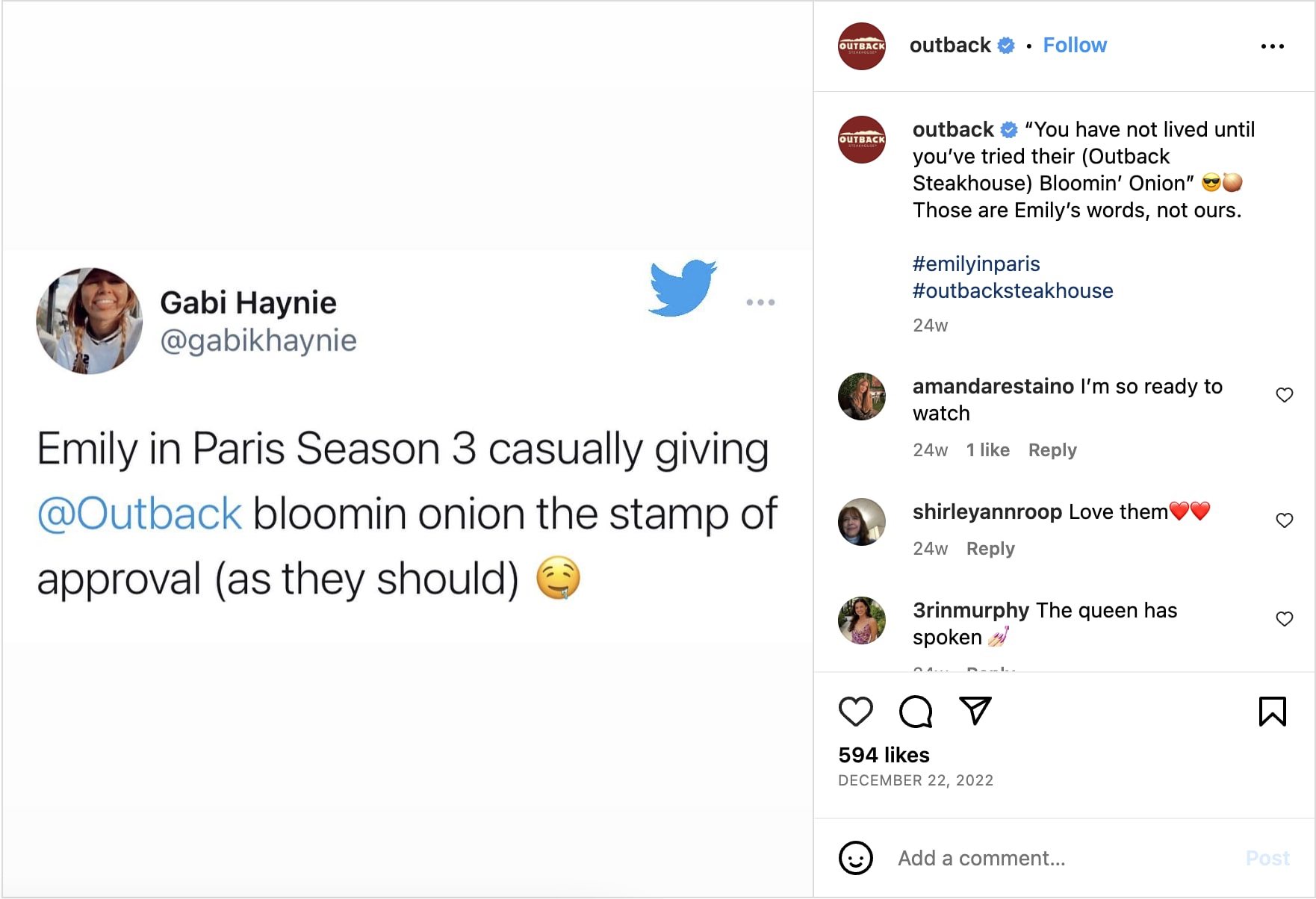
And an example of the latter from eyewear brand Warby Parker:
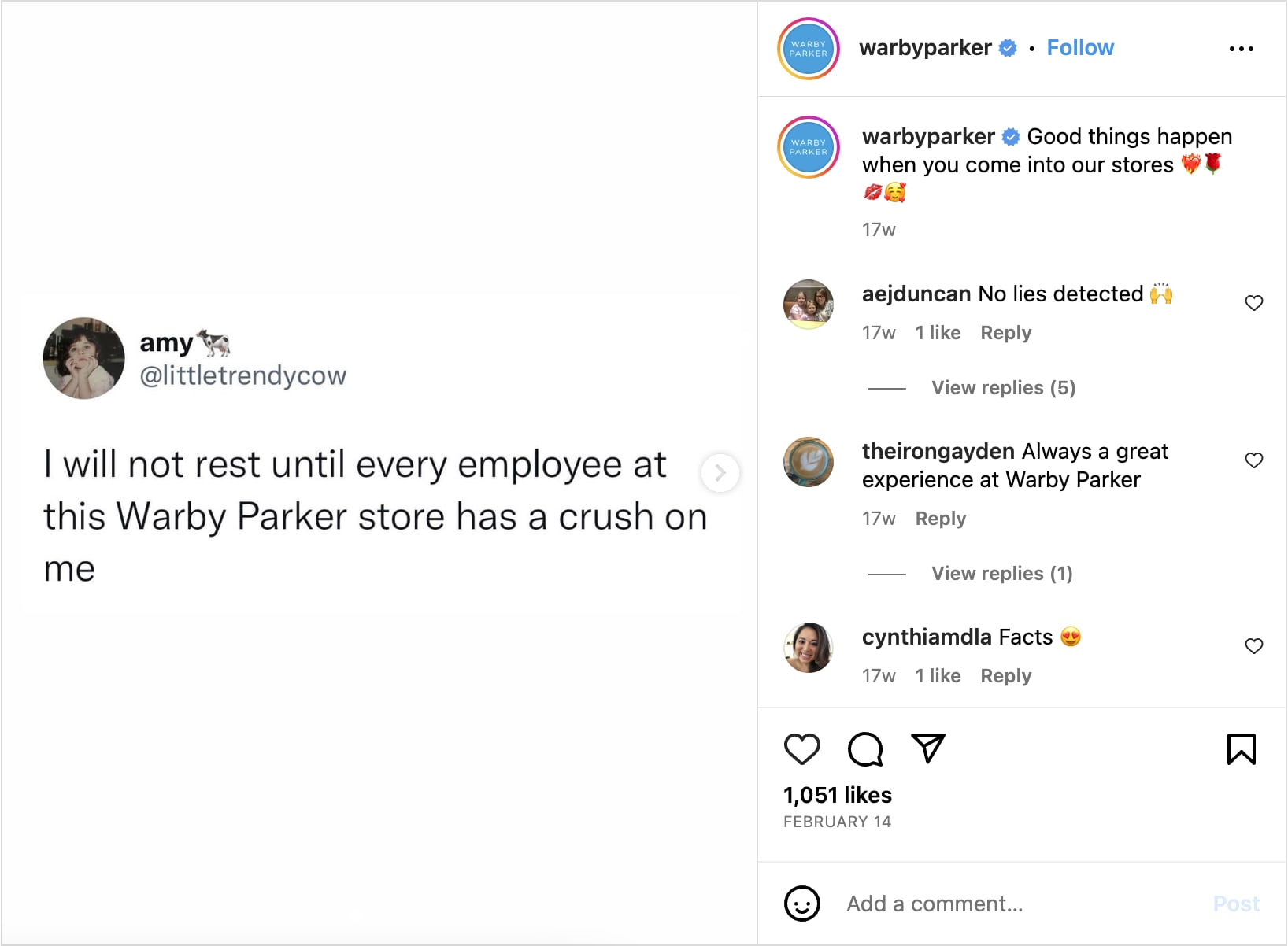
This is a great way to share customer reviews in your Instagram posts without needing to curate a fully glamorous feed. Repurposing mentions in social media posts is a simple way to create and share UGC with little to no effort.
Need help generating UGC content? Hire a TikTok creator for your brand on Fiverr.
5. Start a trend or challenge
Dig into your creative side to see if you can come up with your own social media trend or challenge to start on TikTok and get other creators to join in. This might start as an influencer campaign (more on this later), but eventually other creators might take part, giving you even more UGC to choose from.
e.l.f. Cosmetics tried this when the brand created its own themed song, “eyes, lips, face,” for TikTok. This video kicked off the campaign:

Source: @elfyeah
The brand worked with influencers, but eventually other makeup artists on the platform, like James Charles, used the sound byte:
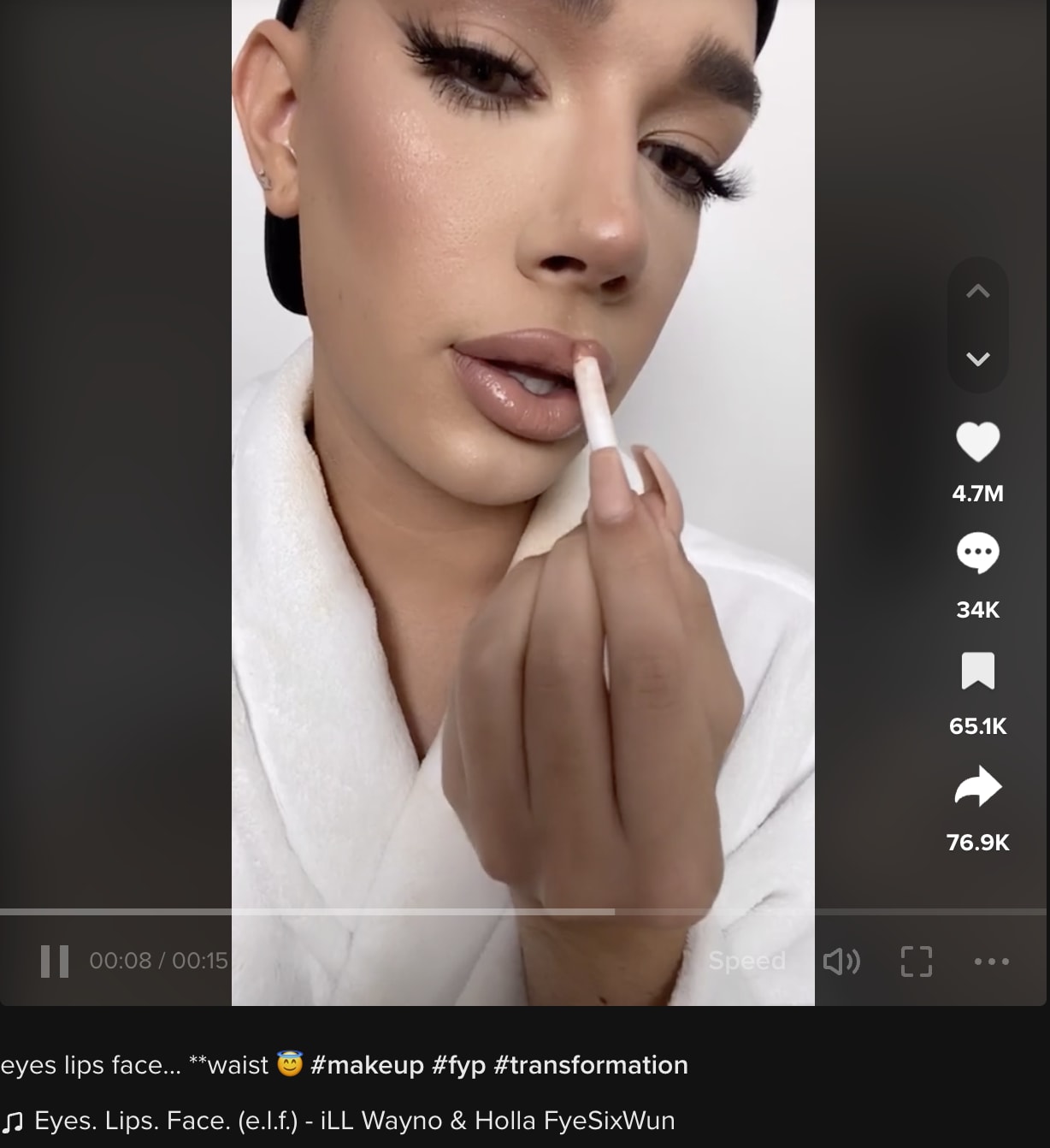
Source: @jamescharles
TikTokers even turned the bop into a dance:
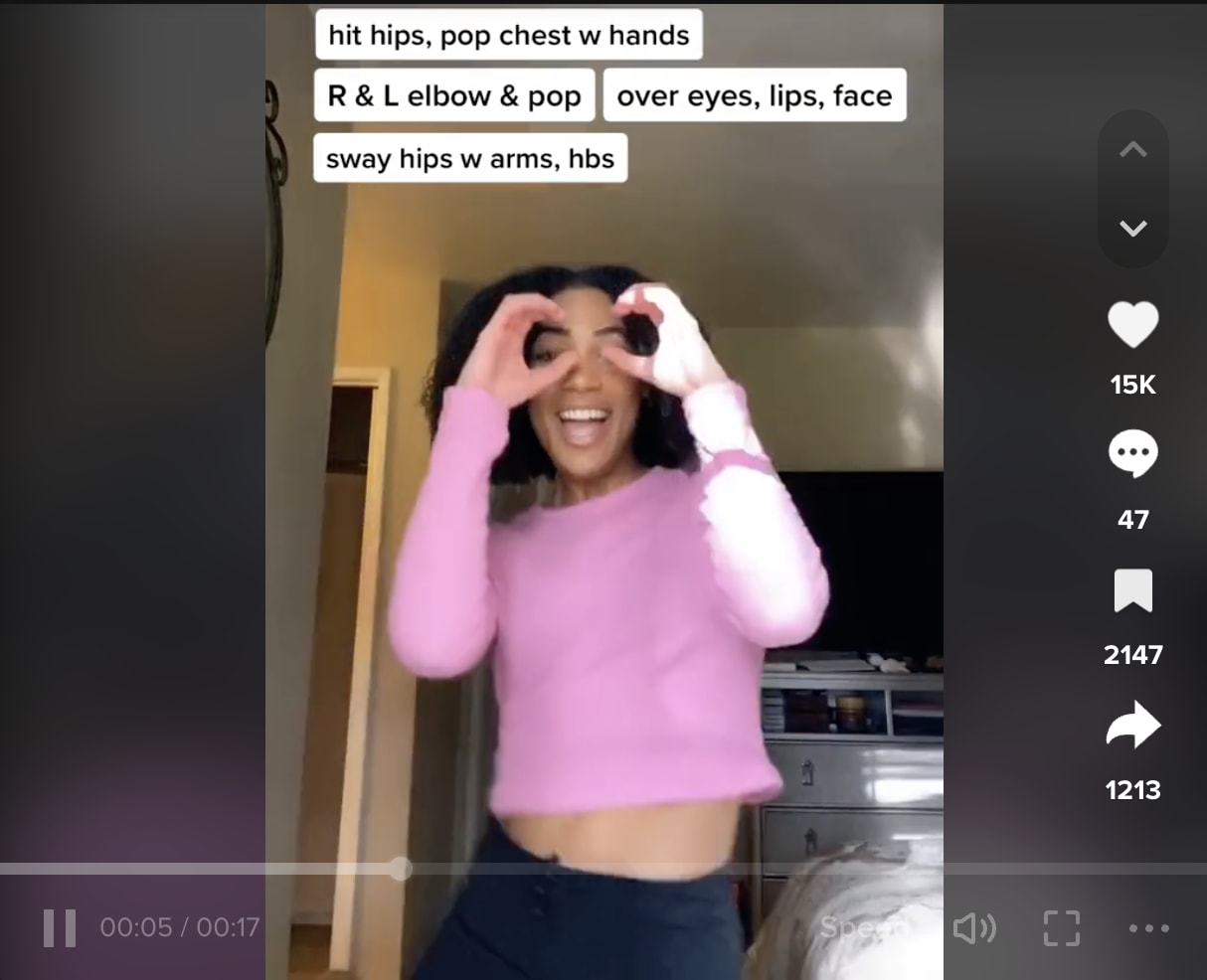
Start browsing through TikTok—the king of challenge videos—to see if you can gather inspiration for a trend that could work well for your brand.
6. Incorporate UGC into your ads
While UGC can help with your organic social media marketing strategy, this type of content is also extremely valuable to use within your paid ads. It feels more authentic and is more likely to grab attention than another basic promotion.
“We use UGC in our retargeting ads on Facebook and Twitter to keep our brand top of mind whenever a potential customer is looking for the services that we offer,” says Ben McInerney, founder of Home Garden Guides.
“Our social media analytics indicate that more than 60% of our customers find us through these platforms, and the posts and ads with the highest engagement and that deliver the most conversions are those that feature UGC.”
This tactic is commonly used on TikTok to help video ads fit into the feed more seamlessly than an abrupt promotion would.
Here’s an example of an ad where a doctor is promoting a brand called Clove that sells shoes for nurses.
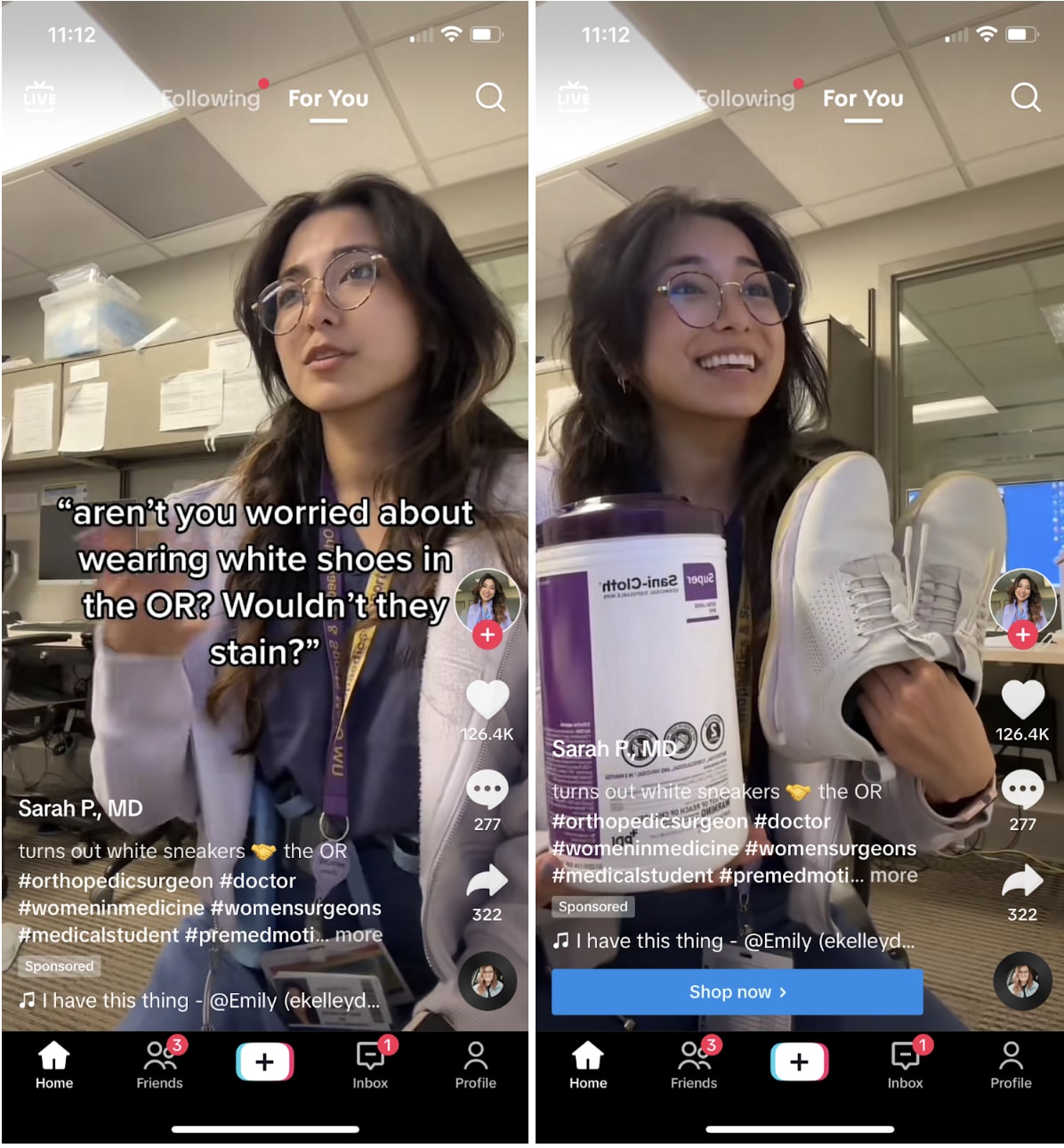
Some UGC ads might feature fully organic content, while others partner with people in their target demographic to create promotional content that still feels authentic. Both tactics can work.
Not the best ads manager? No sweat. Hire an experienced paid social media specialist on Fiverr today.
7. Share product reviews, testimonials, and case studies
Reviews, testimonials, and case studies are social proof bread and butter. These showcase very specific customer experiences people had with your business, helping other prospects feel more comfortable buying from you.
Reviews and testimonials tend to be easier for your customers to provide you with, but case studies require a bit of work from both sides. Your customer has to sit for an interview and someone on your content marketing team has to write up the case study before it’s ready to share. In ecommerce, creators may share unboxing videos and review the experience.
However, they are all valuable types of UGC.
Ryan McKenzie, co-founder of detergent brand Tru Earth, says, “We use positive UGC generated by our customers as testimonials on our website and marketing materials. This serves as a powerful tool for both engagement and conversion, as potential customers can easily relate to the experiences of their peers.”
You can see one example of this right on Tru Earth’s website:
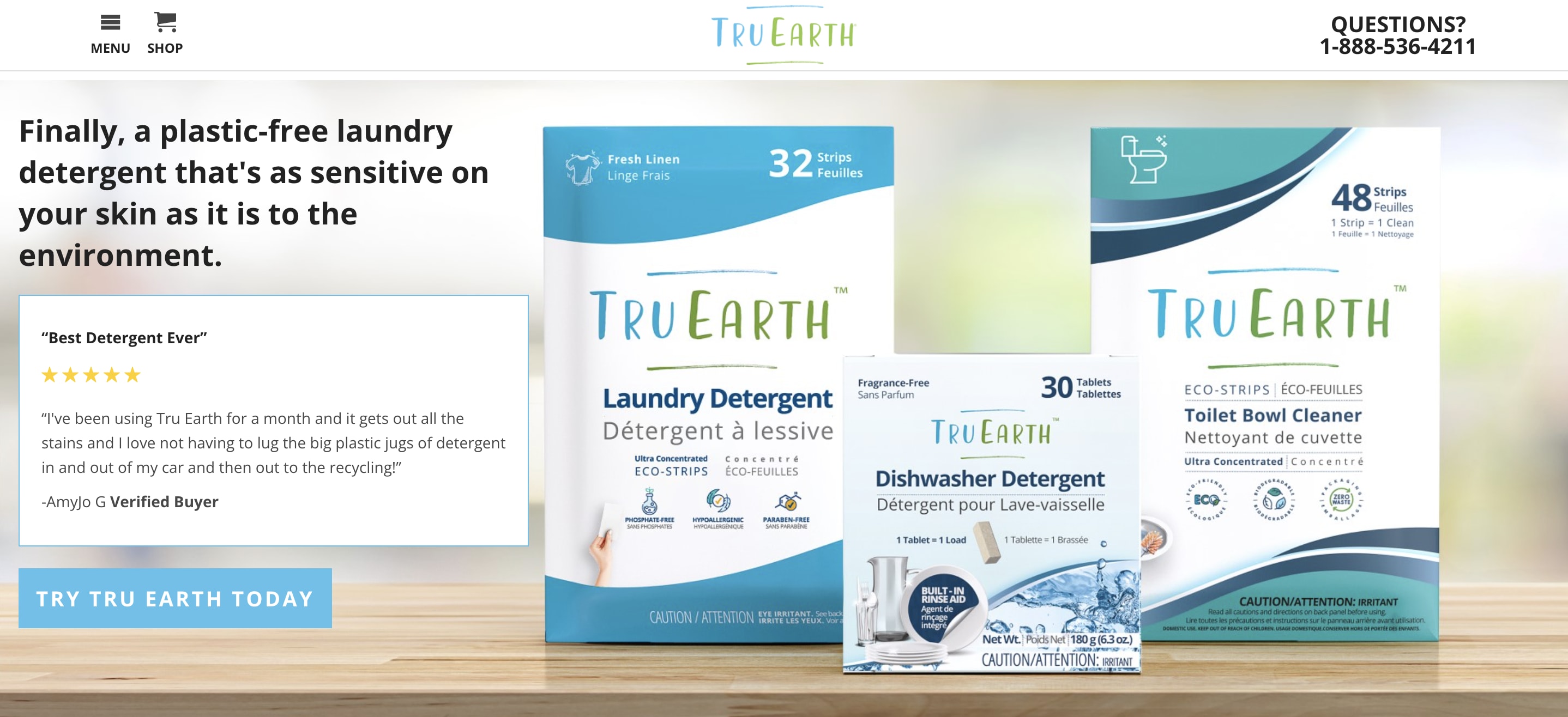
Case studies tend to focus on specific solutions that a business’s product or service has helped a client or customer solve. Here’s an example of some of the case studies/customer stories that automation platform Zapier offers to further sell its software:
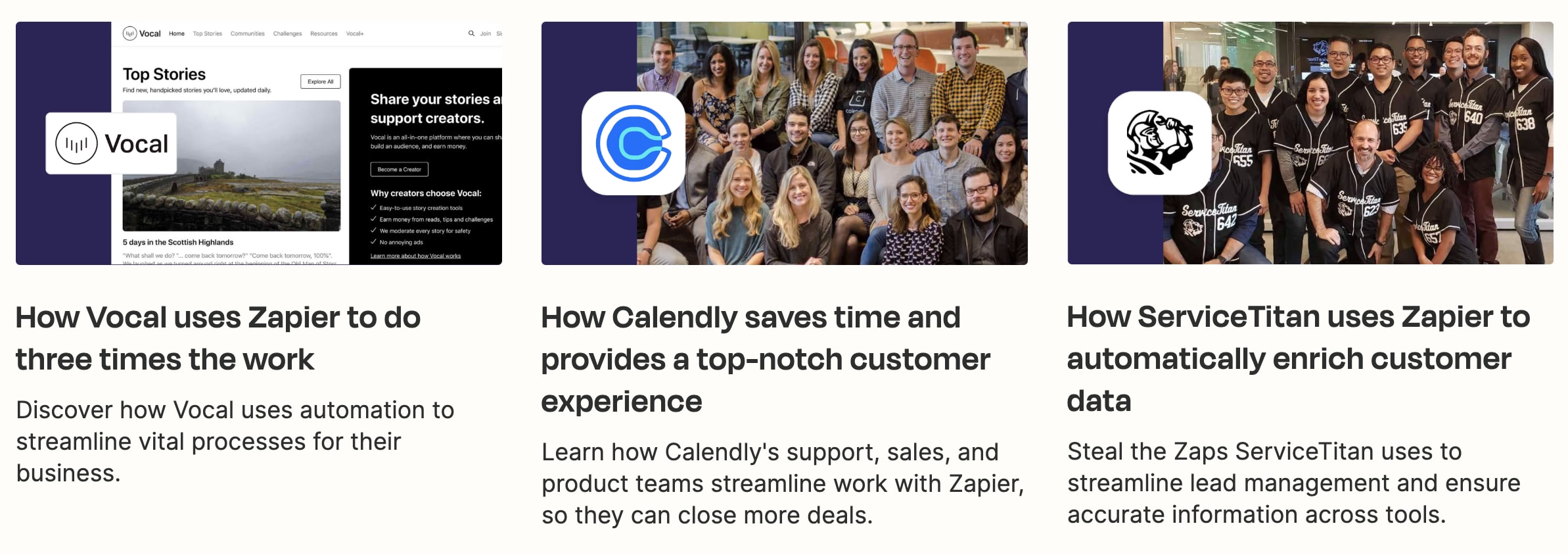
8. Hold a contest or giveaway
Tru Earth also uses contests to help gather UGC. McKenzie says, “Tru Earth often runs contests, inviting customers to share their creative use of our products or tips for living a more sustainable lifestyle. Not only do these contests generate buzz and attract new audiences, but they also inspire other customers to adopt eco-friendly habits.”
Contests and giveaways are great ways to incentivize your customers to provide UGC. One brand that absolutely nails it when gathering UGC via contests is GoPro.
Here’s an Instagram post showcasing the brand’s recent contest winners:
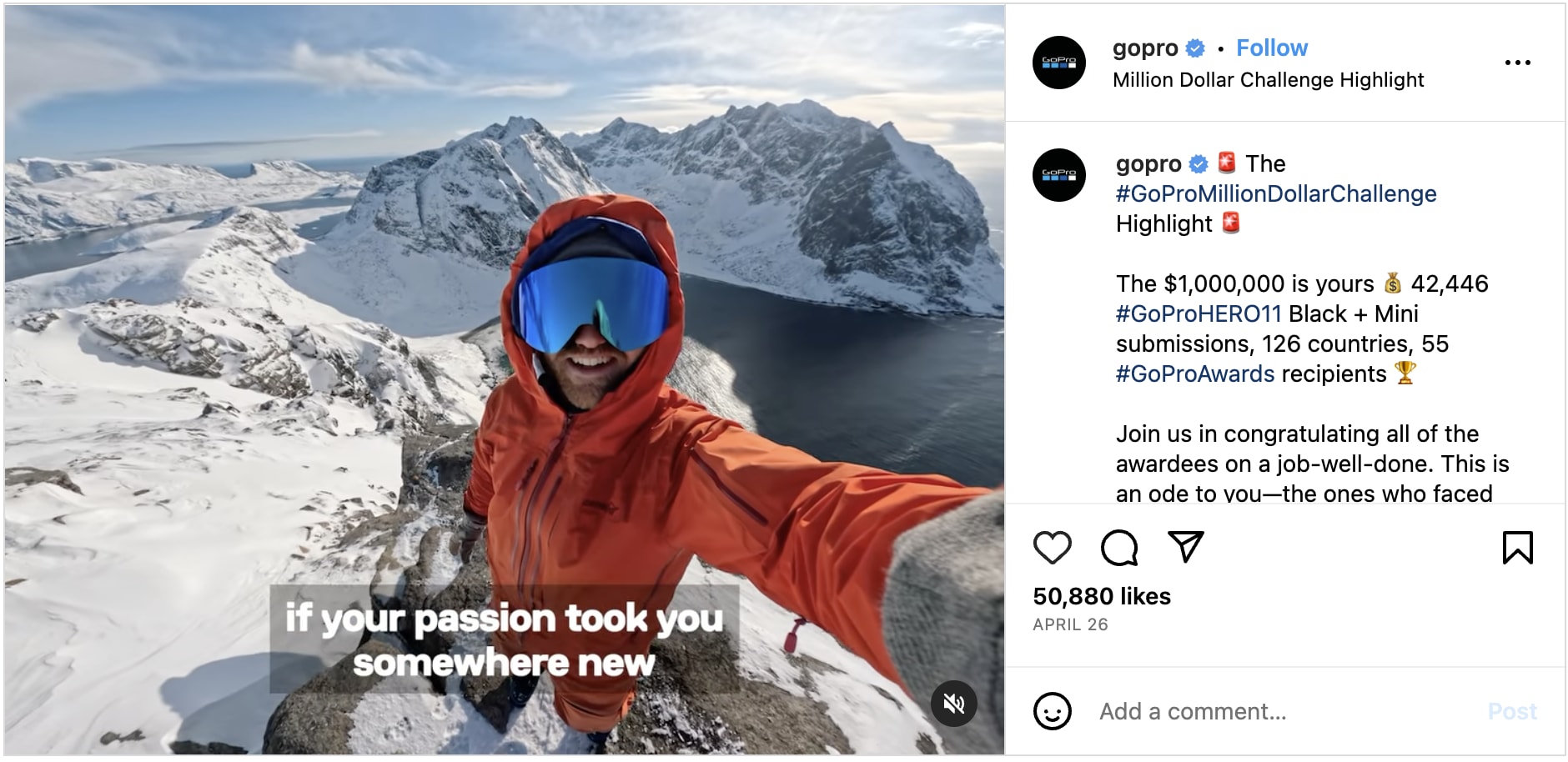
GoPro regularly hosts contests where it asks users to submit video content that matches a certain theme. The brand then rewards the best submissions while also receiving an endless supply of amazing videos to share on its social media channels.
9. Work with influencers and UGC creators
Most of the other strategies we’ve covered help you generate and promote your UGC for free. But this tactic is one you’ll need to set aside some of your digital marketing budget for.
However, working with influencers and UGC creators can help your brand gather high-quality, authentic UGC—especially if you’ve struggled to do so organically.
You can search for influencers on social media, use a UGC platform to find creators, or check out a freelance marketplace like Fiverr as a part of your marketing efforts.
Find someone that matches your target demographic and can create amazing content that both of you can share on the social media platforms of your choice.
Find social media content creators on Fiverr
Top UGC tips
Make sure you’re using UGC the right way. Keep these top tips in mind with your next UGC campaign:
Ask permission before you share a customer’s content.
You can comment on the post, send a DM, or set up a website where customers can sign waivers or submit content they’re OK with your brand sharing on its own social networks.
Give credit to the original poster.
This is especially important when working with influencers and UGC creators so they can continue to build their own audiences.
Share diverse content from and showcase a variety of different people.
Ensure your UGC is as inclusive as the rest of your marketing strategy.
Curate a gallery of UGC that you can consistently pull from.
Continue to put out calls for more UGC so you never run out of content to share.
Use UGC on all of your marketing platforms
—social media, your website, your emails, etc.
Get your employees in on the action.
Create an employee engagement program as a part of your UGC strategy.
Engage with your audience.
Even if they don’t grant you permission to share or it won’t fit in with your strategy, leave comments on all mentions and start conversations with your customers.
Use a UGC platform to help keep all of your content organized.
You can include information like the original creator, whether you’ve gotten permission to share, caption ideas, and more.
Use these UGC strategies in your own content marketing
Ready to make money on Instagram and TikTok with your own user-generated content efforts? Whether you choose to work with content creators or want to gather organic UGC is up to you.
To learn more about UGC creators and whether this method would be cost-effective for your brand, check out Fiverr content creators available for hire.
UGC content FAQ
What is UGC in content?
UGC stands for user-generated content, which refers to any content—text, videos, images, reviews, etc.—created by customers rather than brands or companies themselves. This content represents the public’s true feelings about a product, and it’s often seen on social media platforms, websites, and forums.
What is an example of UGC content?
An example of UGC content is a customer’s review of a new product on a company’s website or a photo shared on social media using a brand-specific hashtag. For instance, someone posting a photo on Instagram with a new pair of shoes from a specific brand and tagging the brand in the post.
How to create content for UGC?
To create UGC, encourage your followers to share experiences or opinions about your products or services. You can do this through contests or rewards, or by creating a unique hashtag for people to use when posting about your brand.
What are the benefits of UGC?
UGC offers several benefits. It builds trust among consumers as it showcases real-life experiences with your products. It’s cost-effective because it generates content without high production costs. UGC also increases engagement and interaction as people are more likely to share and comment on user-generated content.
